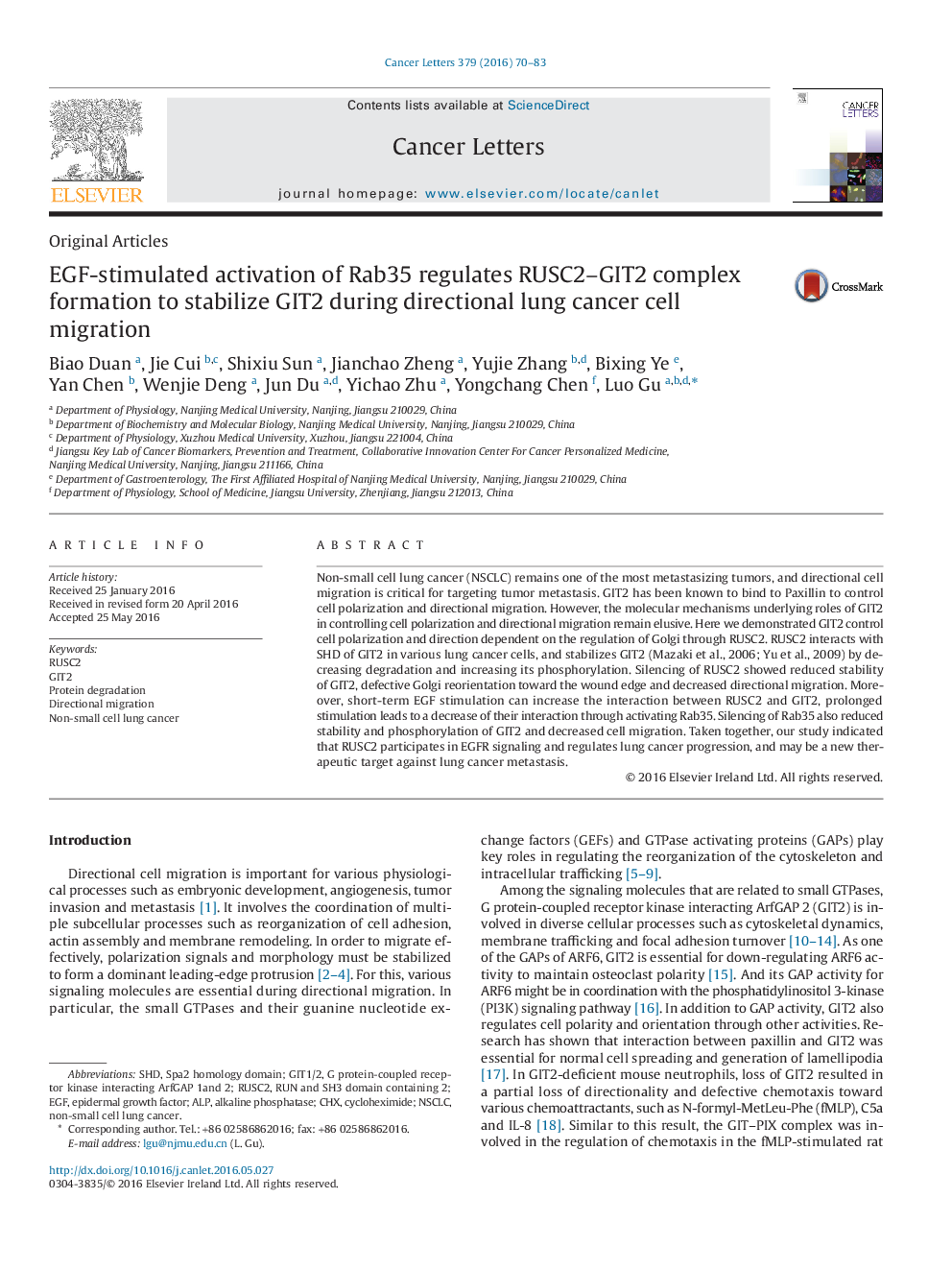| Article ID | Journal | Published Year | Pages | File Type |
|---|---|---|---|---|
| 2116106 | Cancer Letters | 2016 | 14 Pages |
•RUSC2 interacts with the SHD domain of GIT2 and is required for directional lung cancer cell migration.•RUSC2 stabilizes GIT2 protein by attenuating its degradation to increase its phosphorylation.•EGFR signaling induces time-dependent changes in the RUSC2–GIT2 complex through activating Rab35.•GIT2 control cell polarization and direction partially dependent on RUSC2 and regulation of the Golgi apparatus.
Non-small cell lung cancer (NSCLC) remains one of the most metastasizing tumors, and directional cell migration is critical for targeting tumor metastasis. GIT2 has been known to bind to Paxillin to control cell polarization and directional migration. However, the molecular mechanisms underlying roles of GIT2 in controlling cell polarization and directional migration remain elusive. Here we demonstrated GIT2 control cell polarization and direction dependent on the regulation of Golgi through RUSC2. RUSC2 interacts with SHD of GIT2 in various lung cancer cells, and stabilizes GIT2 (Mazaki et al., 2006; Yu et al., 2009) by decreasing degradation and increasing its phosphorylation. Silencing of RUSC2 showed reduced stability of GIT2, defective Golgi reorientation toward the wound edge and decreased directional migration. Moreover, short-term EGF stimulation can increase the interaction between RUSC2 and GIT2, prolonged stimulation leads to a decrease of their interaction through activating Rab35. Silencing of Rab35 also reduced stability and phosphorylation of GIT2 and decreased cell migration. Taken together, our study indicated that RUSC2 participates in EGFR signaling and regulates lung cancer progression, and may be a new therapeutic target against lung cancer metastasis.
